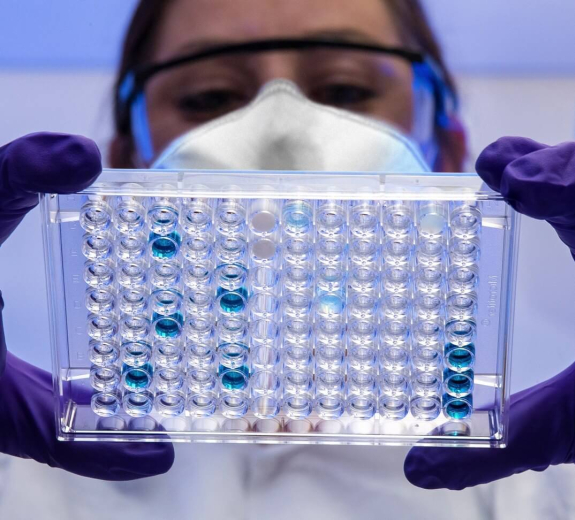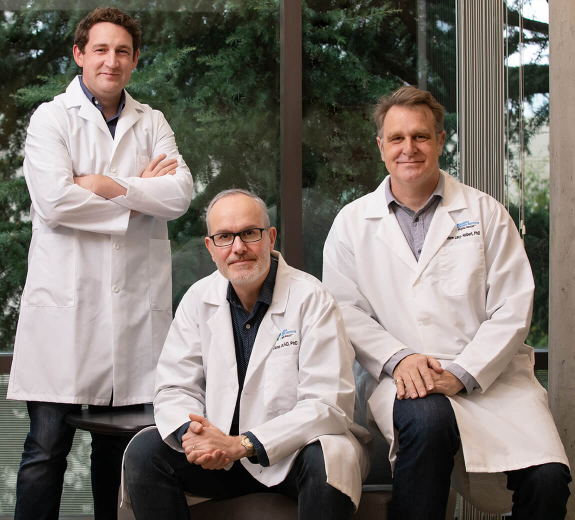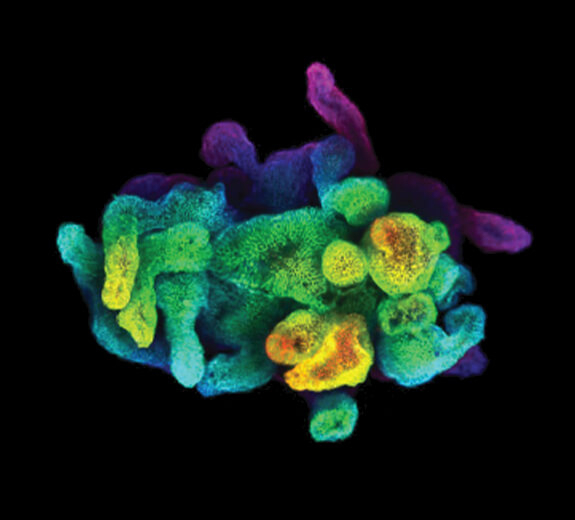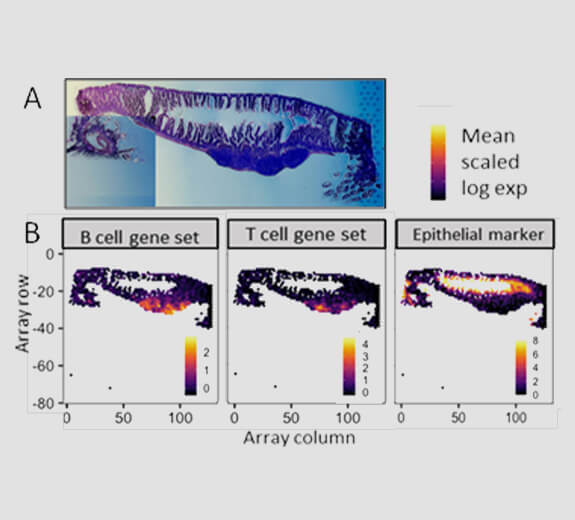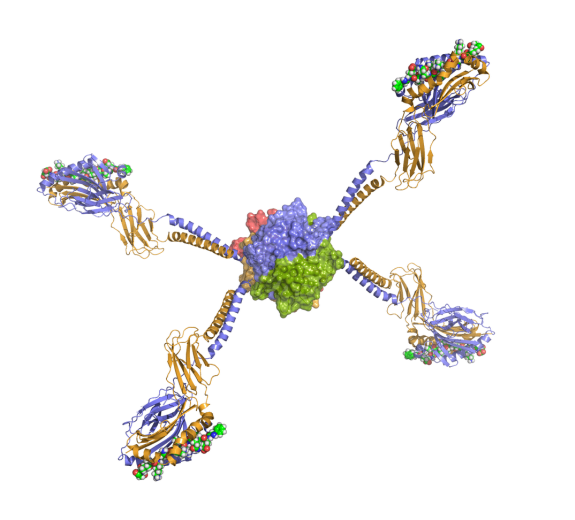Four Reasons to Study the Gut
Improve Clinical Care
This program aims to improve treatments for conditions like celiac disease and inflammatory bowel diseases (IBD) like Crohn’s disease and ulcerative colitis. For example, there are many treatments for IBD — but no way to know which one will work for which person.
“My research aims to take the guesswork out of selecting a treatment by better understanding which therapy will work best for a patient’s unique biology. That will help doctors prescribe the best therapy right away,” says Dr. Lord, a gastroenterologist at Virginia Mason Franciscan Health.
Examine Tissue Samples
Because most autoimmune diseases affect organs that can’t be biopsied (like the brain or pancreas), most immunologists study the blood. The gut presents a rare opportunity.
“People donate biopsy samples from routine colonoscopies to research,” says Dr. Lacy-Hulbert. “Studying the tissue where disease happens gives us more information than studying the blood. Insights about IBD can help us understand other autoimmune diseases too.”
Explore the Microbiome
The gut microbiome — the three to five pounds of microorganisms living in your gut — is full of clues about immune system disease.
“There’s an emerging idea that gut health is an immune sentinel, that it signals what’s going on in your immune system overall,” Dr. Harrison says. “Take checkpoint inhibitor therapy for cancer. Studies show that people with certain microbiome characteristics respond better to the treatment. And that’s for melanoma, a cancer of the skin, not the gut.”
Understand Tolerance
There’s also growing evidence that the gut might be where your immune system learns to recognize friend versus foe.
“The immune system generally keeps us away from bacteria and viruses, but the gut has massive concentrations of them,” Dr. Lacy-Hulbert says. “We want to learn more about how the immune system learns to tolerate them and how this goes wrong in disease.”
Donor-Funded Tools are Powering Possibility
A generous gift (from a donor who wishes to remain anonymous) enabled BRI to build the Gut Immunity Program. This gift helps solve a catch-22 of research: To ask innovative questions, you need innovative technologies. But traditional funding sources, like the government, don’t typically fund tool acquisition or development.
“Thanks to this donor’s support, we’re creating tools that will help us answer questions that otherwise would take years to answer,” Dr. Harrison says. “Once we have them in our program, we can spin them out across BRI — making an even bigger impact.”



